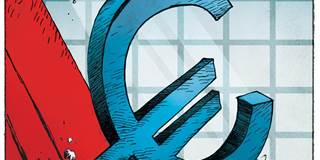At the end of November, the credit-rating agency Standard & Poor’s stripped the Netherlands of its coveted triple-A status. This should raise serious concerns for the most important eurozone member of all – Germany – which shares key macroeconomic similarities with its smaller neighbor and now faces a period of weak political effectiveness.
TILBURG – On December 5, the Dutch celebrate Sinterklaas, a traditional winter holiday that people celebrate by preparing surprises for each other. But this year’s celebration was marred by a surprise that no one wanted: just days before, the credit-rating agency Standard & Poor’s stripped the Netherlands of its coveted triple-A status.
The Dutch government reacted to the downgrade much as France did when it lost its triple-A rating almost two years ago. There is no need for alarm, French officials insisted, because the other two big rating agencies, Moody’s and Fitch, maintained their highest ratings on French sovereign debt. But, earlier this year, France lost its triple-A rating at both Moody’s and Fitch, and S&P downgraded its debt yet again.
Indeed, the Netherlands has plenty of reason to worry – especially given that it is ostensibly doing everything right. When France was downgraded, its public debt exceeded 90% of GDP, and the government had made clear that it would not risk short-term economic growth by addressing its budget deficit. The Netherlands, by contrast, has a relatively low public debt/GDP ratio of 74%, which it is committed to reducing further.

TILBURG – On December 5, the Dutch celebrate Sinterklaas, a traditional winter holiday that people celebrate by preparing surprises for each other. But this year’s celebration was marred by a surprise that no one wanted: just days before, the credit-rating agency Standard & Poor’s stripped the Netherlands of its coveted triple-A status.
The Dutch government reacted to the downgrade much as France did when it lost its triple-A rating almost two years ago. There is no need for alarm, French officials insisted, because the other two big rating agencies, Moody’s and Fitch, maintained their highest ratings on French sovereign debt. But, earlier this year, France lost its triple-A rating at both Moody’s and Fitch, and S&P downgraded its debt yet again.
Indeed, the Netherlands has plenty of reason to worry – especially given that it is ostensibly doing everything right. When France was downgraded, its public debt exceeded 90% of GDP, and the government had made clear that it would not risk short-term economic growth by addressing its budget deficit. The Netherlands, by contrast, has a relatively low public debt/GDP ratio of 74%, which it is committed to reducing further.